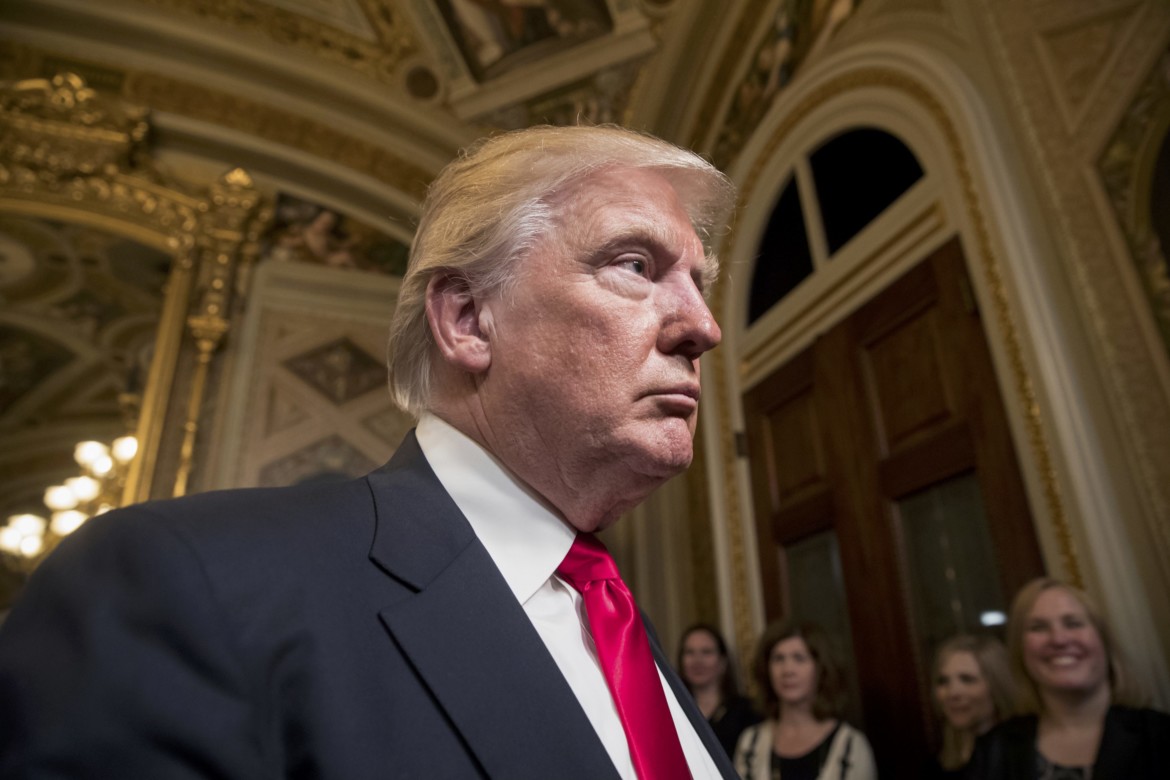
President Donald Trump delivers his inaugural address during the Inauguration at the Capitol Hill in Washington, D.C., U.S., January 20, 2017. REUTERS/Ricky Carioti/Pool
By: Tyler Bloomfield, Anna O’Brien, Brandon Choghri, Alanna Fairey and Hunter Crowther
WASHINGTON — Donald John Trump was officially sworn in as the 45th President of the United States on Friday, delivering an inauguration address with the same populist themes he promoted through his campaign.
On the podium behind Trump were outgoing President Barack Obama, and former presidents Jimmy Carter, George W. Bush and Bill Clinton, joined by his wife Hillary Clinton, who was defeated by Trump in the November election.
Much of his 16-minute speech was spent criticizing previous governments and promoting isolationist-themed policy through trade and foreign affairs.
“January 20, 2017 will be remembered as the day the people of this nation became the rulers again,” Trump said in front of the Capitol building. “The men and women of this country will be forgotten, no longer.”
Trump reiterated his campaign slogan of “Making America Great Again,” notably by bringing back and creating jobs in the U.S.

U.S. President Donald Trump taps glasses with wife Melania at the Inaugural luncheon at the National Statuary Hall after being sworn-in on Capitol Hill in Washington, U.S, January 20, 2017. REUTERS/Yuri Gripas
“We will follow two simple rules: Buy American and Hire American,” said the president.
The native of New York spoke on strengthening existing relationships the U.S. has, including an expansion of foreign policy.
“We will seek friendship and goodwill with the nations of the world, but we do so with the understanding that it is the right of all nations to put their own interests first,” he said.
Trump also mentioned how he hopes to work with other nations in defeating Islamic terrorism.
“We will…unite the civilized world against Radical Islamic Terrorism, which we will eradicate completely from the face of the Earth,” said Trump.

President Donald Trump leaves the President’s Room of the Senate at the Capitol after he formally signed his cabinet nominations into law, in Washington, D.C., U.S., January 20, 2017. REUTERS/J. Scott Applewhite/Pool
Minutes after Trump was finished his speech, an updated official White House website announced the president planned on renegotiating the North American Free Trade Agreement (NAFTA), as well as pulling out of the Trans-Pacific Partnership.
“For too long, Americans have been forced to accept trade deals that put the interests of insiders and the Washington elite over the hard-working men and women of this country,” read the White House page. “As a result, blue-collar towns and cities have watched their factories close and good-paying jobs more overseas, while Americans face a mounting trade deficit and a devastated manufacturing base.”

Canadian Prime Minister Justin Trudeau addresses a joint news conference with U.S. President Barack Obama in the White House Rose Garden in Washington March 10, 2016. REUTERS/Jonathan Ernst
In a statement released early Friday afternoon, Prime Minister Justin Trudeau congratulated the president on his inauguration, highlighting the two nation’s relationship through trade.
“Together, we benefit from robust trade and investment ties, and integrated economies, that support millions of Canadian and American jobs,” Trudeau said.
The prime minister also mentioned how he and Trump both want to strengthen their respective countries’ economies and evolve the middle class.
However, the White House page says “if our partners refuse a renegotiation that gives American workers a fair deal, then the president will give notice of the United States’ intent to withdraw from NAFTA.”
Despite asking Americans to unite together in the aftermath of his inauguration, the self-proclaimed billionaire enters the White House as one of the most unpopular presidents in history.
It all begins today! I will see you at 11:00 A.M. for the swearing-in. THE MOVEMENT CONTINUES – THE WORK BEGINS!
— Donald J. Trump (@realDonaldTrump) January 20, 2017
Protests in the U.S. capital
Smashed windows. pic.twitter.com/yXin6JVMsH
— Byron Tau (@ByronTau) January 20, 2017
Security is tight in Washington, D.C., where 28,000 security forces have been stationed in a 100-block radius to monitor the massive crowd that the District of Columbia’s Department of Homeland Security and Emergency Management is expecting.
Black Lives Matter is now protesting just around the Canadian embassy. #Inauguration pic.twitter.com/ntGwIM5tso
— Humber News (@HumberOnline) January 20, 2017
Pockets of protest groups are scattered throughout the U.S. capital to voice their concerns on a number of social issues.
In addition to protesting at the Canadian embassy, Black Lives Matter and ‘anti-fascism’ activists are demonstrating outside of Union Station.
Protests beginning from right outside the metro station. Should be an interesting day… #Inauguration @HumberOnline @HumberJRNL pic.twitter.com/wbnhxPlIbs
— Anna O’Brien (@annaobrien87) January 20, 2017
Last night, tensions were high in D.C. as protestors screamed in each other’s faces, just short of getting physical.
Tensions are high here in Washington D.C. to say the least outside the National Press Building. pic.twitter.com/UvfKlEOEyB
— Humber News (@HumberOnline) January 20, 2017

